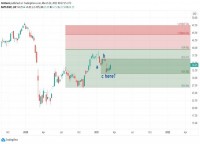|
|
Opalesque Industry Update -
EDHEC-Risk Institute has announced the results of the EDHEC European ETF Survey 2010, which presents the results of a comprehensive survey of 192 institutional investors, asset managers and private wealth managers conducted between January and March 2010.
On the whole, the results of the survey suggest that, as a consequence of strong growth, the industry has entered a phase of increased maturity. As ETFs are now very widely used, investors are embracing more advanced ways of trading and using ETFs, such as OTC trading and securities lending, and the positive impact of ETFs on the market as a whole, including their underlying assets and other related instruments, is being felt by an increasing number of market participants. Despite this maturity, there is still room for growth. In particular, survey respondents see a need for new products on emerging markets and alternative asset classes. Likewise, ETFs are still used mostly in static strategies and on broad market indices; their potential contribution to dynamic asset allocation and to allocation strategies in precisely defined market segments or styles is not yet fully exploited.
Among the key findings of the 2010 survey:
1. ETFs are widely used and are becoming even more important to investors
Satisfaction rates have reached astonishing highs of about 90% for equity, government bond, and infrastructure ETFs, and above two-thirds for other ETF products. Dissatisfaction with corporate bond, real estate, and hedge fund ETFs, reported after the financial crisis and evident in last year’s survey, is much less in evidence. ETFs are particularly popular in the equity (96%) and commodity (80%) sectors. As the market has matured, the percentage of investors using ETFs is increasing at a much slower rate than in the past, but ETFs account for a fast-growing share of the portfolio assets of those who do use them. Indeed, assets in ETF investment account for at least one-fifth of total investment in each asset class. So, although the percentage of investors who use ETFs may have levelled off, the intensity has not, as shown by the significant growth of the most recent year.
2. New trends in the use of ETFs have emerged
First, the number of investors who reported that they trade more than 90% of their ETF investments on OTC markets rose from 6% in 2009 to 12% in 2010. Our 2010 respondents also report an increase in the number of their trading counterparties. In addition to these changes in the ways ETFs are traded, the use of advanced products such as options on ETFs has grown in the last twelve months. In addition, there is a broader consensus on the preferred means of replicating indices when constructing an ETF. Pure replication ETFs are the favourite, but interest in synthetic replication ETFs is growing; statistical replication, on the other hand, is falling out of favour, a trend that, despite the 2008 financial crisis, which led to a slight dip in the popularity of synthetic replication, has been taking shape over the last four years.
3. ETFs provide investors with information and increase market efficiency
Investors use ETFs as sources of information on market developments and state that they observe improvements in market efficiency after the introduction of ETFs. These results dovetail with the evidence found by much of the literature; that is, that the introduction of ETFs has improved the price efficiency in the spot and future markets.
4. Future developments in the ETF industry
For traditional asset classes, investors would like to have a broader choice of relatively risky products. For example, 52% of investors would like to see the development of emerging market equity ETFs; 37% and 34% would like to see more emerging market bond ETFs and high yield bond ETFs. Although 80% of investors who invest in commodities allocate to commodity ETFs, 39% of respondents would like to see these ETFs developed still further. New products such as currency ETFs and hedge fund ETFs are also on investors’ wish-lists.
5. ETFs are mainly used as static asset allocation vehicles
ETFs are used largely for passive holdings of broad market indices. 70% of all ETF users, for example, report that they frequently rely on ETFs to obtain broad market exposure; and for more than 60% of the respondents ETFs are predominantly long-term or buy-and-hold investments. By contrast, fewer than 50% of respondents state that they frequently rely on ETFs for short-term investments or for exposure to specific market sub-segments. And the large majority of investors who take a core-satellite approach to portfolio management report that they rely mainly on broad market indices, especially in the core. But the wide range of ETFs for sub-categories and styles is left partly unused.
6. Investor views of ETFs and of other indexing vehicles
Although futures rival ETFs, ETFs are seen as clearly superior to traditional index funds on all available quality criteria. For investors, the main advantages of ETFs are the ease with which they can be used and the wide product range. Although there are more than 800 ETFs or ETF-like products offered in Europe (Fuhr and Kelly 2009) and growth in the use of ETFs has stabilised, the ETF industry is still developing. As investors have begun using ETFs in a more sophisticated fashion (OTC trading of ETFs, for example) and embraced innovative products (ETFs on new asset classes, leveraged ETFs, and so on), it is clearly in the interests of the ETF industry to continue making new products available and proposing innovative ways to use them.
This survey was sponsored by Amundi ETF.
To download the EDHEC-Risk Institute Publication “EDHEC European ETF Survey 2010,” May 2010, please press the [Ctrl] key and click on the link: Source
About EDHEC-Risk Institute
EDHEC-Risk Institute is part of EDHEC Business School, one of Europe’s leading business schools and a member of the select group of academic institutions worldwide to have earned the triple crown of international accreditations (AACSB, EQUIS, Association of MBAs). Established in 2001, EDHEC-Risk Institute has become the premier European centre for financial research and its applications to the industry. www.edhec-risk.com
Bg
|





 RSS
RSS







